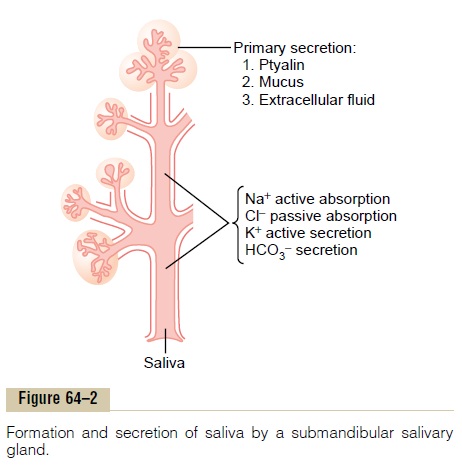Chapter: Medical Physiology: Secretory Functions of the Alimentary Tract
Pancreatic Secretion

Pancreatic Secretion
The pancreas, which lies parallel to and beneath the stomach (illustrated in Figure 64–10), is a large com-pound gland with most of its internal structure similar to that of the salivary glands shown in Figure 64–2. The pancreatic digestive enzymes are secreted bypancre-atic acini, and large volumes of sodium bicarbonatesolution are secreted by the small ductules and larger ducts leading from the acini. The combined product of enzymes and sodium bicarbonate then flows through a long pancreatic duct that normally joins the hepatic duct immediately before it empties into the duodenum through the papilla of Vater, surrounded by the sphinc-ter of Oddi.

Pancreatic juice is secreted most abundantly in response to the presence of chyme in the upper por-tions of the small intestine, and the characteristics of the pancreatic juice are determined to some extent by the types of food in the chyme. (The pancreas also secretesinsulin, but this is not secreted by the same pancreatic tissue that secretes intestinal pancreatic juice. Instead, insulin is secreted directly into the blood—not into the intestine—by the islets of Langer-hans that occur in islet patches throughout the pan-creas.

Related Topics